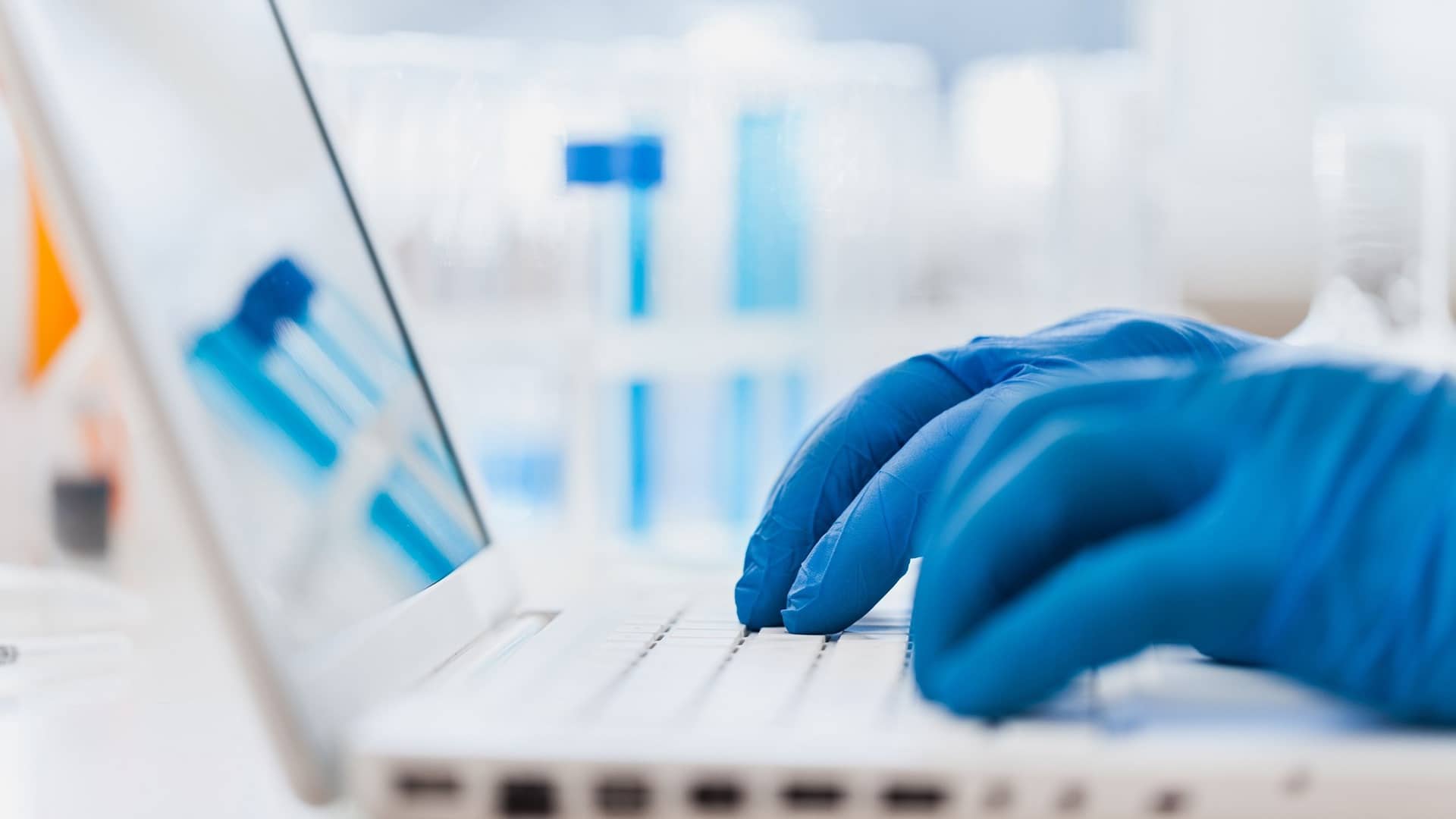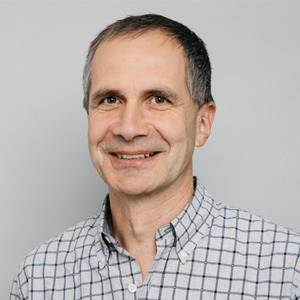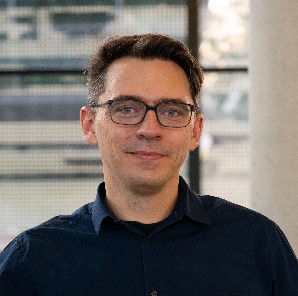
WG3 Leaders
Lead
WG3
Description
The objectives of WG3 are to (1) understand the potential of the tools available for the analysis, (2) to help European and developing countries to assess harmonized methods, and (3) to facilitate and encourage access to EU research infrastructures and facilities. The planned activities will include the establishment of guidelines and standard operating procedures for established analytical approaches such as optical/fluorescence microscopy, vibrational spectroscopy (Fourier transform infrared and Raman spectroscopy), and thermal methods (e.g., differential scanning calorimetry or pyrolysis gas chromatography mass spectrometry). For the established techniques, special emphasis will be placed on standardized methods with a higher throughput, in order to realize a statistically relevant characterization of samples. On the other hand, novel analytical approaches having the potential to detect as well as identify plastic particles of a few mm or submicron size (NP), preferably in its native state, will be evaluated and established. The latter will be carried out in close collaboration with WG4 to establish novel nanospectroscopic and masspetrometric approaches as a tool for this so-far predominantly uncharted field. Providing access of standardized established, as well as newly developed, innovative approaches for users across Europe and beyond, in combination with training to enable efficient use, represents another key part of work.
WG3
Subgroups and subgroup leader
Subgroup 1 – Microscopy (optical, fluorescence)
Leader: dr. Inta Dimante-Deimantovica, Agency of Daugavpils University “Latvian Institute of Aquatic Ecology”, Latvia (inta.dimante-deimantovica@lhei.lv)
Microscopy (nanoscale)
Leader: dr. Gregor Hlawacek, Helmholtz-Zentrum Dresden-Rossendorf, Germany (g.hlawacek@thzdr.de)
Spectroscopy (IR/Raman)
Leader: dr. Maria Laura Santarelli, Sapienza Università di Roma, Italy (marialaura.santarelli@uniroma1.it)
Pyrolysis and GC/MS
Leader: dr. Laurent Lemee, Institut de Chimie des Milieux et Matériaux de Poitiers [IC2MP], France (laurent.lemee@univ-poitiers.fr)
Modelling & Data Evaluation
Leader: dr. Arianna Varrani, Institute of Geophysics Polish Academy of Sciences, Poland (avarrani@igf.edu.pl)
WG3
Meetings
WG3 Kick-off meeting, on-line (7th April 2022)
The aim of this meeting was introduction of COST Action PRIORITY to the WG1 participants, as well as short self-introduction of the participants. Results of the questionnaire shared among participants showed that they are mostly in academia and focus on microscopy, spectroscopy and thermal methods of micro- and nanoplastic (MNP) characterization as well as on data analysis and modelling. Many PRIORITY participants want to contribute in harmonization and standardization activities in the field of MNPs. They are also interested in training their colleagues to familiarize them with different analytical techniques.
During the meeting it was also discussed several other points such as:
- Contribution of WP3 to objectives of COST action: The main objectives target collaborative projects, sharing know-how increase standardization as well as training of researchers (capacity building).
- Contribution of the WG3 to the deliverables
- Short term scientific mission (STSM) and ITC Conference Grants
- WG3 structure & networking with other WGs
2nd WG3 meeting, 2nd June 2022, on-line
During the meeting infrastructure access was explained, announced and discussed, as well as state of the art and open questions about analytical methods. The sub-group leaders gave an introduction into the methods as well as the state-of-the-art. Two lectures were included:
“Introduction into spectroscopic methods for MP analysis”
by Maria Laura Santarelli
“Introduction into thermal methods for MP analysis”
by Laurent Lemee
3rd WG3 meeting, 4th July 2022, hybrid (Brescia, Italy)
4th WG3 meeting, 20th October 2022, on-line
This meeting was organized as subgroup leader meeting, where discussion was made about strategy for further WG work and format of future WG meetings.
5th WG3 meeting, 12th September 2022, on-line
Two lectures were organized for this meeting in order to initiate discussions about analytical methods:
“Introduction into microscopic methods for MP analysis”
by Gregor Hlawacek
“Introduction into Raman tweezers for micro- and nanoplastic detection”
by Antonio Foti
The talk is structured under the sub-group spectroscopy.
Preliminary results of the questionnaire related to analytical instrument were presented.
6th WG3 meeting, 24th April 2023, on-line
This meeting was organized as subgroup leader meeting, where discussion was made about preparation and formalities for Full Action Meeting, and discussion of potential subjects for a joint study.
7th WG3 meeting, 20th September 2023, hybrid (Brussels, Belgium)
Two lectures were organized for this meeting:
“Quantifying microplastics in environmental samples with Py-GC-MS”
by Laurent Lemee
“100 or 10.000 microplastics kg-1: What are the problems with analyzing MP concentrations in soils?”
by Moritz Bigalke
Joint interlaboratory study was proposed and discussion was made about operational details of this activity.
8th WG3 meeting, 19th June 2024, hybrid (Novi Sad, Serbia)
The meeting centred on ongoing activities and recent advances in micro- and nanoplastics characterization.
- Activity report – The session began with an update on the Kettle Comparison Study, presenting the latest results and engaging participants in a discussion on data interpretation, methodological comparability, and next analytical steps.
- Scientific presentations –
- Matthias Schmidt (UFZ Leipzig, Germany) presented a correlative microscopic approach combining light, electron, and ion techniques to characterize micro- and nanoscale particles, highlighting the advantages of multimodal analysis for structural and chemical insights.
- Parisa Ariya (McGill University, Canada) introduced a four-dimensional physicochemical characterization method for nano- and microplastics, enabling rapid, high-resolution analysis that captures spatial and temporal variations “in a blink of an eye.”
- Next steps – Plans for the forthcoming meeting were briefly discussed, with attention to follow-up actions related to interlaboratory studies and analytical harmonization.
9th WG3 meeting, 10th July 2025, online
The WG3 virtual meeting focused on recent advances in analytical and data-driven approaches for micro- and nanoplastic research, bringing together experts from spectroscopy, microscopy, and environmental sciences.
- Julia Boeke (Leibniz IPHT Jena, Germany) presented developments in high-throughput analysis of microparticles, illustrating how integrated spectroscopy and imaging workflows can accelerate data acquisition and improve particle classification.
- Alexandra Foetisch (University of Darmstadt, Germany) introduced an innovative concept combining chemical and microscopic techniques with artificial intelligence, aiming to overcome current challenges in nanoplastic detection and identification.
- Guilherme Ferreira (Federal University of Rio de Janeiro, Brazil) discussed the use of lanternfish as bioindicators for microplastics in the deep sea, presenting a spatiotemporal analysis based on historical museum specimens.
- In the outlook, Stefania Federici (Action Chair) highlighted upcoming activities, including the COST PRIORITY FINAL CONFERENCE to be held in Leoben, Austria, on September 2–5, 2025.
WG3
Completed or ongoing activities
- Technical talks & discussions through the subgroup themes during the WG meetings.
- Survey about participants and methods/techniques available, training offers.
-
Training School “Recent Trends in Microplastic Research” 22.-25.5.2023, Leibniz IPHT Jena, Germany
This Training School of 5 days had 73 participants, included 12 + 4 lectures and more than 60 poster pitch talks / poster session. Beside on-site lectures/posters/hike, and an excursion to the Research Center Rossendorf / Dresden was organized.
- Joint test and comparison study about MP release from plastic water heaters in WP3
The study was planned and initiated in two subgroup leader meetings at 22.10.2022 and 24.04.2023 and a proposal for a study was presented at the WG 3 session at the Full Action Meeting (20.09.2023). After the Full Action Meeting a subgroup leader meeting took place at 29.09.2023 and also Thomas Meisel (WG6) participated. It was decided to do some initial tests on water heaters to check if these subjects would release enough material to be analyzed and could be suitable for a joint study.
A first pre-test exercise, known as the “Water Kettle Comparison Study”, was conducted to explore the feasibility of implementing an ILC within PRIORITY under no-budget conditions. The objective was to assess the release of microplastics during boiling processes and to compare the results obtained using various complementary analytical methods, including spectroscopic and thermal techniques.
The pre-test raised several methodological questions, such as:
- How to design and coordinate an ILC without dedicated funding;
- How to simplify and clarify experimental protocols;
- Whether the particle size range produced was suitable for the analytical techniques involved;
- And whether measurement results were reproducible within and between laboratories.
The exercise highlighted several key findings. The proposed protocol required simplification to improve clarity and ensure consistent execution among participants. A large proportion of the generated particles were smaller than 20 µm, which challenged the detection limits of some analytical techniques. As a result, reported particle counts and size distributions varied across methods, primarily due to differences in lower size thresholds and data evaluation settings.
Based on these insights, WG6 concluded that future interlaboratory studies should rely on simpler and more controlled test materials, such as microplastic suspensions of defined size and known polymer composition. These materials would allow laboratories to test identification accuracy and reproducibility under harmonized conditions, including both number- and mass-based quantification approaches.
Ultimately, the group recognized that rather than organizing new ILCs within PRIORITY itself, the most effective strategy is to collaborate with and support existing interlaboratory initiatives coordinated by metrological institutes and other established organizations. By contributing expertise, participants, and harmonized methodological recommendations, PRIORITY can best advance the shared goal of achieving robust, traceable, and internationally harmonized protocols for micro- and nanoplastic analysis.
WG3
Future/planned activities
- Joint test and comparison study about MP release from plastic water heaters in WP3
The study was planned and initiated in two subgroup leader meetings at 22.10.2022 and 24.04.2023 and a proposal for a study was presented at the WG 3 session at the Full Action Meeting (20.09.2023). After the Full Action Meeting a subgroup leader meeting took place at 29.09.2023 and also Thomas Meisel (WG6) participated. It was decided to do some initial tests on water heaters and baby bottles to check if these subjects would release enough material to be analyzed and could be suitable for a joint study. After the pre-analysis the joint study might start.
WG3
State of the art
WG3 participants
- Doi: 10.1007/s10311-023-01652-9
- Doi: 10.1016/j.scitotenv.2022.157983
- Doi: 10.1016/j.envint.2023.107885
- Doi: 10.1016/j.scitotenv.2022.160036
- Doi: 10.1016/j.scitotenv.2022.153676
- Doi: 10.1016/j.envpol.2018.04.042
- Doi: 10.5194/gmd-16-5339-2023
- Doi: 10.1007/s00216-023-04689-5
- Doi: 10.1016/j.scitotenv.2022.160038
- Doi: 10.1139/AS-2022-0006
- Doi: 10.3389/fenvs.2022.912107
- Doi: 10.1371/journal.pone.0269449
- Doi: 10.3389/fmicb.2021.603967
- Doi: 10.3390/molecules27165172
- Doi: 10.1016/j.scitotenv.2023.166513
- Doi: 10.1007/s00216-023-04630-w
- doi: 10.1016/j.scitotenv.2022.158745
- doi: 10.1016/j.trac.2022.116885
- doi: 10.1039/D1EN00945A
- doi: 10.1021/acs.est.2c07416
- doi: 10.1007/s11356-019-04584-6
- doi: 10.1016/j.mex.2023.102143
- doi: 10.1016/j.scitotenv.2023.166513
- doi: 10.1016/j.watres.2021.117409
- doi: 10.1088/2515-7647/acb57b
- doi: 10.1016/j.watres.2022.119185
- doi: 10.1016/j.envpol.2023.122072
- doi: 10.1016/j.scitotenv.2023.164370
- doi: 10.1016/j.jaap.2021.105377
- doi: 10.3390/polym14071305
- doi: 10.12989/mwt.2021.12.1.011
- doi: 10.12989/mwt.2018.9.5.363
- doi: 10.1016/j.desal.2010.11.034
- doi: 10.1021/acs.estlett.2c00949
- doi: 10.1016/j.envres.2022.113569
- doi: 10.1016/j.mex.2023.102143
- doi: 10.1016/j.cej.2020.128208
- doi: 10.1021/acs.chemrev.1c00178
- doi: 10.1016/j.enmm.2023.100862
- doi: 10.1021/acs.accounts.8b00602
- doi: 10.1016/j.cogsc.2021.100503
- doi: 10.1007/s00289-023-04912-4
- doi: 10.1016/j.matpr.2023.03.640

